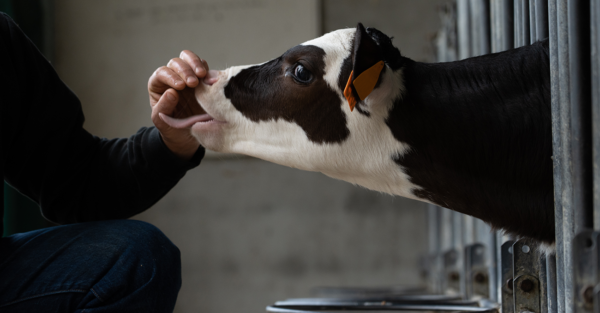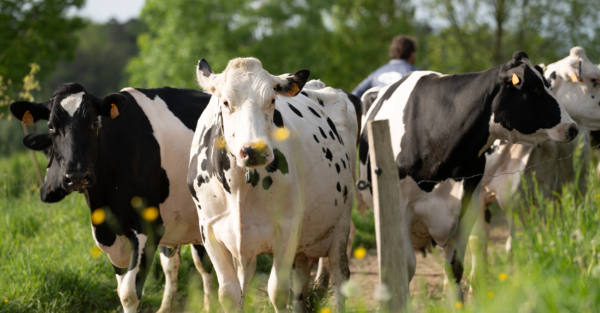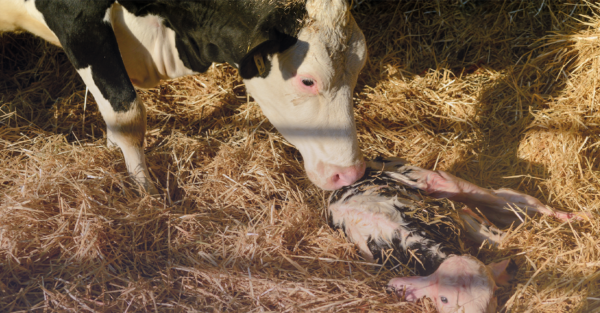Blog | Reading Time 4 minutes
Rumen health seminar: Regular forage analysis pays
Key points
- Test all forage and key feed ingredients regularly.
- Be sure to submit representative samples using correct sampling techniques.
- Adjust ration for variation to keep a consistent diet.
Regular testing of forage and feed ingredients can more than pay for itself by providing a consistent, high quality and cost-effective ration to livestock, according to keynote speaker, Cliff Ocker.
Cliff is the Director of Sales & Client Relations with Rock River Laboratory, a leading provider of analytical services to the agricultural industry in North America, South America and Europe.
“It’s all about consistency because that’s what cows like,” he says.
“Any change in consistency affects livestock performance.”
“One of the most important ways of keeping a consistent diet in front of them is to regularly assess the nutritional value of forages and feedstuffs.”
“Some of our dairy customers in the US are sampling two and three times a week, which allows them to adjust diets before their cows tell them something’s different or wrong.”
“The end goal is to remove any fluctuations in average daily gain or milk production.”
Cliff says routine testing can easily pay for itself in improved livestock performance and reduced feed costs.
“It’s unbelievable how much profit is tucked away in there,” he says.
“Say you were making a 18% CP feed using a mix of canola and corn.”
“If testing showed the protein content of canola delivered had increased from say, 40% to 43%, you might be able to save $5 tonne in the cost of delivered feed by reducing the amount of canola in the ration.”
“Multiply that by a couple of hundred tonnes and the value of testing can quickly stack up.”
“You can achieve major savings from measuring and adjusting just one ingredient – imagine if you do it for multiple ingredients.” Cliff says correct sampling technique is essential.
“Testing feedstuffs is like sighting a rifle,” he says.
“The more shots you fire, the more you are going to get a better understanding of your accuracy and consistency, we can’t pull a 100% representative sample each time.”
“The average of three samples is going to be more accurate than one – and the average of 10 samples is going to more accurate than three.
“The rules are simple: sample all the major feed ingredients routinely, particularly those that vary the most; collect representative samples; and adjust your ration for any real variation.”
Cliff says improper sampling technique is the greatest source of error in forage analysis.
“A testing laboratory can determine the quality of the sample submitted – but it’s not going to be very helpful in balancing a diet if the submitted sample was not representative of what’s actually being fed,” he says.
“When testing silage, take five to eight samples from across the face in a ‘M’ or ‘Z’ pattern.”
“Take one sample at each point of the letter and half-way in between each point. Place these samples in a bucket, mix well and subsample from here to send to the lab.”
Cliff says modern analytical methods, such as total tract neutral detergent fibre digestibility (TTNDFD), can provide a more accurate measure of fibre digestibility.
“Don’t just look at traditional measures of quality like dry matter, crude protein, starch, fibre and ash – what really counts is whether your cows can actually use these nutrients.” he says. “How digestible are they?”
“Determining NDF quality based on a single digestibility test at 30 hours is like watching a movie for one scene and then trying to guess what the ending’s going to be.”
“TTNDFD, a totally different concept, looks at 4 different NDF Digestibility time points to gain a better understanding of the rate of passage and utilisation through the digestive tract.”
“It tells you what’s actually happening in the rumen, not in a laboratory.”
“A two- or three-point change in TTNDFD (in a diet) can correspond to a 0.5 litre/day change in milk yield.”
Cliff says it is also important to monitor processing levels in silage.
“The way we measure this is by looking at the percentage of starch that will pass through a 4.75 mm screen while being shaken for 10 minutes on a Ro-Tap Sieve Shaker,” he says.
“Properly processed corn silage should have a processing score of more than 60% and ideally, more than 70%.”
“Conversely, poorly processed corn silage will lead to lower rumen starch degradation and lower total tract digestibility.”
Published Jul 17, 2023
Related articles
Need specific information?
Talk to an expert


